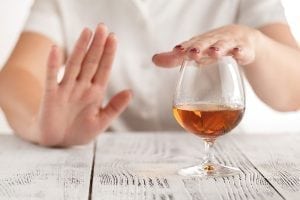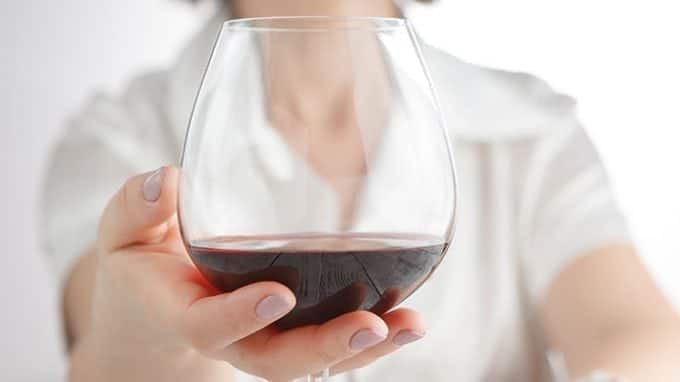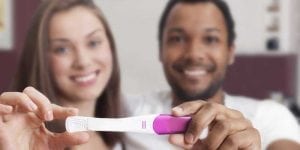When it comes to trying to conceive, one approach stands for certain: healthy habits promote healthy fertility. Among these healthy habits is that of avoiding heavy drinking, as it can increase the length of time needed to become pregnant. But with the unknown window of trying to conceive, a drink may be desired from time to time. So, what’s a safe amount to drink?
A Fertility Study on Moderate Drinking

The results of the study were published in the BMJ, a wholly owned subsidy of the British Medical Association. By the end of the study, 69 percent of the women (4,210) had gotten pregnant.
Women who consumed no more than 13 drinks weekly (based on a 4-ounce serving size of wine) did not suffer a decline in fertility compared to women who did not consume alcohol. Heavier drinking however, which consisted of more than two standard bottles of wine weekly, saw an 18 percent decline in fertility.
This study and its results has been debated however, because many experts believe that women should abstain from alcohol throughout the time when they are trying to become pregnant. Even the researchers of the study suggest that women not drink alcohol during their fertile window until they can ascertain whether they have become pregnant, as alcohol consumption in the early weeks of pregnancy may cause damage to the fetus.
On the other side of the spectrum, in another study, the effects of moderate alcohol consumption did show a negative impact on fertility. In the study, 430 couples aged 20 to 35 were tested over a period of three years. The results showed that women who consumed five or fewer alcoholic drinks per week exhibited reduced fertility. After six menstrual cycles, 64 percent of women who had consumed five or fewer alcoholic beverages became pregnant. In comparison, 55 percent of women who consumed more per week were able to conceive during the same time period.
Practical Advice

Women need not feel unbearably guilty about light drinking in the non-fertile times of her cycle. However, a woman needs to refrain from alcohol consumption if there is any chance that she is pregnant.
Drinking Suggestions
When looking at the types of alcohol consumed, the study published in the BMJ showed that there was a slight decrease in fertility when women consumed hard liquor compared to consuming small amounts of beer or wine, which did not impact fertility rates.
If you’re certain that pregnancy has not occurred and the fertile-window has passed, here are five drinks to consider if you’re craving a drink but don’t want to pose threat on your long-term fertility:
- Wine spritzers – 3 parts wine to 1 part club soda
- Cocktails utilizing Campari, an aperitif, made by infusing herbs and fruits into alcohol
- Low-alcohol and no-alcohol beers
- Low-alcohol wine
- Ginger beer – most contain about 0.5 percent alcohol, but some up to 4 to 5 percent
Some women choose to drink mocktails, delicious concoctions that imitate their alcohol-containing cousins.
Don’t forget men’s fertility when it comes to conception. When it comes to alcohol consumption, heavy drinking in men causes lowered sperm counts, decreased sperm quality, loss of libido and impotence.
When it comes to discussing starting a family, the conversation should include talking about alcohol. Raising a child is a life-long commitment that shouldn’t be impacted by excessive alcohol consumption. It’s best to commit to light drinking, when appropriate and abstinence during pregnancy.
Light to moderate drinking, according to recent studies, may not adversely impact a woman’s fertility, but consider lighter versions of alcoholic beverages and avoid hard liquor completely to avoid adding unnecessary risks to your fertility. In addition, be sure to refrain from drinking any alcohol if there is any chance that you may be pregnant.
For those looking for mocktail options, here are three recipes to satisfy your cravings.
Virgin Watermelon Margarita
Ingredients:
1 medium seedless watermelon, cut into chunks
1/2 C fresh lime juice
4 tsp. agave
1/3 C sparking water
Directions:
In a blender, puree enough watermelon chunks so that you have 4 cups of watermelon puree.
Add lime juice and agave and mix again. Pour into 4 cups. Top with sparkling water.
Mango Mule
Ingredients:
4 – 5 slices of Cucumber
1 oz. Honey syrup*
1.5 oz. Mango puree
1.5 oz. Fresh lime juice
1.5 oz. Ginger beer
Ice
Directions:
Muddle cucumber and honey syrup in the bottom of a cocktail shaker.
Add the mango puree and lime juice and shake, covered, with ice vigorously for 10 seconds.
Strain into a copper mug. Top with ginger beer and stir to incorporate.
Strawberry Chamomile Mocktini
Ingredients:
1 oz. Elderflower Cordial
½ oz. Simple Syrup
½ oz. Ginger Base
4 oz. Chamomile
1 Strawberry
5 Mint leaves
Orange and lemon wedge
Directions:
Muddle strawberry with simple syrup and ginger base.
Add the elderflower and chamomile and five mint leaves along with the orange and lemon wedge.
Add ice and shake before straining into a cocktail coupe.
Pineapple Ginger Beer
Ingredients:
1 oz. Freshly squeezed lime juice
1 oz. Fresh pineapple juice (Make sure pineapples are very ripe; peel, core, and run through juicer; let the juice sit until foam settles to the top; strain off foam before mixing)
1 oz. Ginger syrup (Combine 1 liter fresh ginger juice – roughly chopped ginger root through a juicer and fine strain twice – with 675g superfine sugar; stir vigorously to combine)
Directions:
Combine ingredients in a tin and shake very quickly with cold ice.
Strain into a frozen Collins glass filled with fresh ice.
Garnish with crystallized ginger and a lemon wedge.




